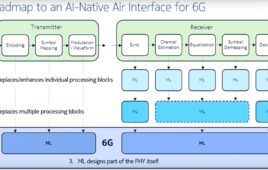Global Positioning Systems (GPS) have revolutionized the once-perilous labor of navigating great distances, or reaching destinations you’ve never been to before. Using satellite data, a GPS can be used virtually anywhere, with the sole exception of an area having no reception if someone is using a cell phone. It’s taken years to perfect this technology that’s made travel more convenient for countless people over the years. The next navigational frontier to tackle is the ocean, namely for submerged underwater vehicles like submarines and UUVs (Unmanned Underwater Vehicle). It’s a realm that’s impenetrable by conventional GPS signals, and forces vehicles like submarines to periodically break the surface in order to get a fix on the coordinates of their exact location.
Defense Advanced Research Projects Agency (DARPA) and BAE Systems have conducted collaborative research towards developing next-generation communications technology that works underwater, capable of guiding submarines and UUVs without having to resurface. This underwater GPS system is called Positioning System for Deep Ocean Navigation (POSYDON). It uses a combination of long-range acoustic signals, a surface buoy or beacon, and GPS signals to form a precise accurate location on an underwater vehicle’s whereabouts, and the direction it’s heading.
POSYDON is only in the first phase (modeling signal propagation channels) of development, and helps underwater devices like submarines and UUVs determine their location and navigational direction by picking up several long-range underwater acoustic signals from a small number of sources. Once the craft detects those signals, the sources they originate from use surface buoys to receive their GPS coordinates, which help triangulate the exact location of a navigating underwater craft.
While it seems simple, the process is more tedious than it might originally seem. Conventional GPS systems use algorithms that can calculate an object’s distance by using the known speed of light, and how long it would take to travel. An electromagnetic signal from a radar system, for example, would use the speed of light and duration of travel to identify an object’s location, shape or speed.
“For GPS, the speed of light is constant…” says Lin Haas, manager of DARPA’s Strategic Technology office. “That is not the case for underwater speed of sound. Underwater signals area function of many things, primarily temperature and salinity. We have developed models that account for all these acoustic signals underwater. Underwater signals don’t travel in a single line.”
Since acoustic signals don’t have a linear path of transmission, it makes the path from transmitter to receiver very difficult to connect. It serves as a reminder of how early the stages of development for this technology truly are, which could take years before it’s ready for widespread use. With two more phases left to complete (developing single underwater acoustic waveforms and completing a prototype positioning system), the finalized results will provide bountiful information and resources for submarines and UUVs. Upon completion, the POSYDON system will help submerged vehicles identify potential threats like mines, enemy watercrafts, and provide top-notch surveillance in places where nobody else possesses the means to accurately monitor their surroundings.



